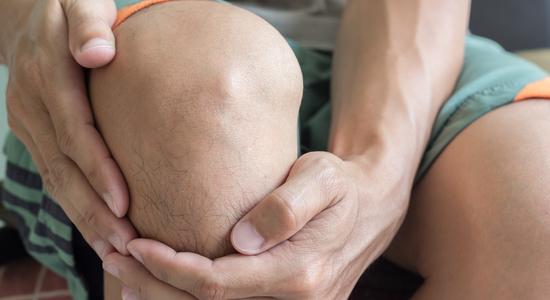Joint Focus: Knee
What is the one joint that gives more trouble to more people over their lifetimes? The knee! Problems with aging knees are one of the leading causes of disability in older adults. The knee is critical to mobility and is a joint that receives a lot of stress, but not a lot of TLC. Read on to learn more about your aching knees, how to prevent further damage and steps you can take to keep your knees healthy and mobile.
Understanding The Knee Joint
The knee is a type of joint known as a hinge joint. This means that two parts come together like a door hinge, connected in the middle. The two parts, in this case, are the thigh and the shin joined in the middle by the knee. This hinge joint is primarily designed to bend and flex, not twist. But there is some ability in the knee to tolerate lateral (sideways) and twisting motions. A healthy range of motion in the knee relies on strong and flexible muscles in the upper and lower leg that connect to and stabilize the knee. So exercise is key to keeping the knee supported!
Strengthening Knees
Always check with your physician before starting a new exercise program, especially if you have knee discomfort. And ask for supervised exercise programs for people with your specific issues. Physical therapists have excellent suggestions for knee strengthening exercises. And many gyms have trainers who specialize in rehabilitative workouts.
If your knees check out okay, start with simple strengthening exercises. Good choices are stair climbing, biking, and simple squats against the wall. Try this:
- Stand with your back to a wall, feet hip-width apart
- Walk your feet away from the wall a couple of feet
- Bend your knees gradually, sliding your back down the wall until you reach a comfortable squat. If your knees hurt, you went too far!
- Do not go below the point where your thighs are parallel to the floor
- Be sure that your knees always stay directly above your ankles, with your shinbones straight up and down. To do this you will have to adjust the position of your feet
- Keep your back on the wall at all times
- When you are finished, slide up the wall by walking your feet in and straightening your legs
Keeping Knees Flexible
Strength is just one component of healthy knees. Another is flexibility. This does not mean flexibility in the joint itself but in the muscles surrounding the knee. The most important muscle group to stretch is the quadriceps; the four muscles that make up the front of the thigh. These muscles all connect to the top of the knee and can pull the kneecap (patella) up when they are too tight. It's also important to stretch the hamstrings - the muscles on the back of the thigh - as well as the adductors (inner thigh) and the IT Band (Ilio-Tibial Band) on the outer thigh.
A good simple stretch for the quadriceps can be done lying prone (on your belly) with a strap or towel.
- Hook the strap around one ankle, and gently bend your knee until you feel a stretch in the front of your thigh
- A good way to isolate the stretch in the thigh is to exhale deeply, drawing in your belly and reaching your tailbone down toward your heels
- excellent stretch for the hamstrings can be done with a strap or towel lying on your back.
- With one leg on the floor and the other reaching up toward the ceiling, hook the strap around the foot of the raised leg
- Gently draw the straight raised leg toward you
- You may not be able to make it point straight up, that's okay! If you feel a stretch in the back of your thigh “ you're doing it right
Caring For Sore Knees
The best friend of sore knees (after consulting with your physician, of course!) is rest and ice. You can apply ice up to four times an hour for 15 minutes at a time. Ice reduces swelling and inflammation and also helps to lessen discomfort.
Consult with your physician about other treatments or medication he or she may recommend. And don't forget to add supplements shown to support the health of your joints and more, like Schiff® Mega-D3©. Each small Mega-D3© softgel has 5,000 IU of Vitamin D3 plus resveratrol and red wine extract to support many key areas of health that decline with age: joint, muscle, bone, immune, cardiovascular, breast and colon health, plus memory and concentration.
